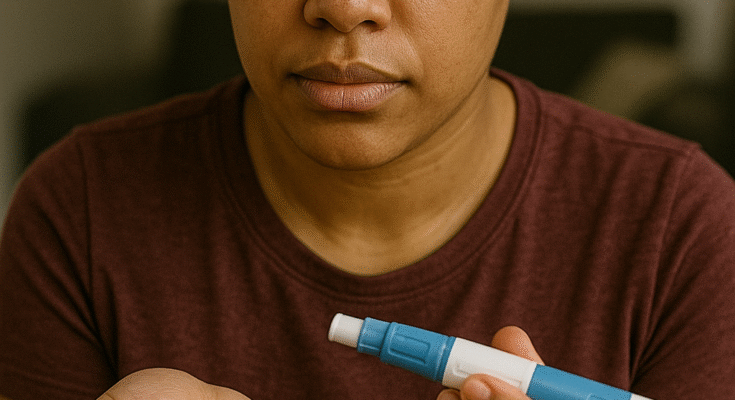The world of weight management and diabetes care has been transformed by a new class of medications that promise not just better health but a redefined relationship with food. Two heavyweights in this arena, Zepbound and Ozempic, have captured the spotlight, sparking debates among patients, doctors, and researchers about which one delivers superior results. As a dual-agonist drug, Zepbound targets two hormones to tackle obesity, while Ozempic, a single-agonist stalwart, has become a household name for its diabetes control and off-label weight loss benefits. But when it comes to effectiveness, side effects, and overall impact, is Zepbound truly better than Ozempic? Let’s dive into the science, the data, and the real-world experiences to find out.
Understanding the Contenders: Zepbound and Ozempic
Zepbound, with its active ingredient tirzepatide, is the brainchild of Eli Lilly, an American pharmaceutical giant. Approved by the FDA in November 2023 for chronic weight management, it’s also marketed as Mounjaro for type 2 diabetes. What sets Zepbound apart is its dual-action mechanism, targeting both glucagon-like peptide-1 (GLP-1) and glucose-dependent insulinotropic polypeptide (GIP) receptors. This two-pronged approach mimics gut hormones that regulate appetite, slow gastric emptying, and enhance insulin secretion, making it a powerhouse for weight loss and blood sugar control. In clinical trials, patients on the highest dose of Zepbound lost an average of 21% of their body weight over 72 weeks, a staggering figure that has turned heads in the medical community.
Ozempic, on the other hand, is Novo Nordisk’s semaglutide-based injectable, approved in 2017 for type 2 diabetes management. It’s a GLP-1 receptor agonist, meaning it focuses solely on mimicking the GLP-1 hormone to boost insulin production, curb appetite, and slow digestion. While not FDA-approved for weight loss, Ozempic gained fame when celebrities and influencers touted its off-label slimming effects. Its sibling, Wegovy, uses the same active ingredient and is approved for weight loss, with studies showing an average 15% body weight reduction over 68 weeks. Ozempic also boasts cardiovascular benefits, reducing the risk of heart attack and stroke in diabetic patients with heart disease.
Weight Loss: Zepbound’s Edge in the Numbers
When it comes to shedding pounds, Zepbound appears to outshine Ozempic. The SURMOUNT-5 study, published in December 2024, compared tirzepatide (Zepbound) directly with semaglutide (Wegovy, the weight-loss version of Ozempic’s active ingredient). Over 72 weeks, Zepbound users lost 20.2% of their body weight, compared to 13.7% for Wegovy users. Earlier trials echoed this trend: non-diabetic patients on Zepbound’s highest dose dropped up to 26% of their body weight over 88 weeks, while Ozempic’s standard 1 mg dose yielded about 12.5 pounds of weight loss in 40 weeks for type 2 diabetes patients. Even when factoring in Wegovy’s higher doses (up to 2.4 mg vs. Ozempic’s max of 2 mg), Zepbound’s dual-agonist action seems to pack a bigger punch.
Why does Zepbound outperform? Its GIP activation may be the secret sauce. GIP not only enhances insulin response but also influences how the brain regulates energy use and fat storage, potentially amplifying weight loss beyond what GLP-1 alone can achieve. Real-world reviews on platforms like Drugs.com, where Zepbound scores an impressive 8.8/10 from 354 users, highlight dramatic appetite suppression and effortless healthy eating. One user, a 64-year-old woman, reported losing 4 pounds in two weeks without carb cravings, calling it “an amazing drug.”
Side Effects: A Shared Burden with Subtle Differences
Both medications come with a similar side effect profile, largely due to their action on the digestive system. Nausea, vomiting, diarrhea, and constipation are common, especially during the initial dose escalation. For Zepbound, these gastrointestinal issues may be slightly more pronounced at higher doses due to its dual-agonist nature, with some studies suggesting a marginally higher discontinuation rate (6.1% vs. 8% for Ozempic). However, many users report these effects wane as the body adjusts. A Reddit user on Zepbound described initial nausea but marveled at losing 12.5 pounds in seven weeks with no hunger.
Ozempic’s side effects mirror Zepbound’s, though its single-agonist mechanism may cause fewer intense GI disturbances at lower doses. Its long track record also reveals rare but serious risks, like pancreatitis and a potential link to thyroid C-cell tumors in animal studies, though human evidence is inconclusive. Zepbound carries a similar thyroid tumor warning, and both drugs are contraindicated for those with a history of multiple endocrine neoplasia syndrome type 2. Depression and suicidal thoughts are also concerns, with Eli Lilly advising immediate discontinuation if these arise.
Beyond Weight Loss: Diabetes and Cardiovascular Benefits
For type 2 diabetes management, Ozempic has a clear edge due to its established FDA approval and robust cardiovascular benefits. It’s proven to lower the risk of major cardiovascular events in adults with diabetes and heart disease, and in 2025, it gained approval for reducing kidney disease progression in diabetic patients. Zepbound, while effective for blood sugar control (as seen with its Mounjaro counterpart), lacks similar cardiovascular data, though studies are ongoing.
That said, Zepbound’s dual-agonist action offers a broader metabolic impact, potentially making it a more holistic choice for patients with obesity and mild blood sugar issues. Medical experts, like Dr. Alice Johnson, note that Zepbound’s ability to target GIP receptors could redefine obesity treatment by addressing fat storage and energy use more comprehensively. For patients prioritizing weight loss over diabetes-specific outcomes, Zepbound’s superior results may tip the scales.
Cost and Accessibility: The Financial Reality
Both drugs are pricey, with list prices hovering around $1,000 per month. Zepbound’s cost can drop to $349–$499 through Eli Lilly’s direct-to-patient vials, but insurance coverage remains spotty for weight loss medications. Ozempic may be covered for diabetes but often isn’t for off-label weight loss. Savings programs exist—Eli Lilly’s Zepbound savings card and Novo Nordisk’s Diabetes Savings Offer—but eligibility is limited, especially for government insurance holders. A Reddit user lamented paying over $1,000 for Zepbound after being ineligible for discounts. Ultimately, out-of-pocket costs depend on insurance, pharmacy, and dosage.
FAQs
How long does it take to see results from Zepbound or Ozempic?
Weight loss with Zepbound can start within weeks, with significant results (10–15% body weight) often seen after 12–16 weeks on higher doses. Ozempic typically shows modest weight loss (5–7%) within the first few months, with maximum effects at 6–12 months. Both require consistent use and lifestyle changes for optimal outcomes.
Can I switch from Ozempic to Zepbound if I’m not losing enough weight?
Switching is possible but requires medical supervision. Your doctor will assess your health goals, side effect tolerance, and response to Ozempic. Zepbound’s dual-agonist mechanism may offer better weight loss, but transitioning involves tapering doses to avoid side effects. Consult your provider for a tailored plan.
Are Zepbound and Ozempic safe for long-term use?
Both are considered safe for long-term use in eligible patients, but risks like pancreatitis, thyroid tumors, and mental health changes require monitoring. Regular check-ins with your doctor ensure benefits outweigh risks, especially since obesity and diabetes are chronic conditions needing sustained treatment.
Conclusion: The Verdict on Zepbound vs. Ozempic
So, is Zepbound better than Ozempic? If weight loss is your primary goal, Zepbound’s dual-agonist prowess and clinical data suggest it’s the stronger contender, delivering up to 20–26% body weight reduction compared to Ozempic’s 12–15%. Its ability to curb appetite and reshape energy use makes it a game-changer for obesity. However, Ozempic remains a titan for type 2 diabetes management, with proven cardiovascular and kidney benefits that Zepbound has yet to match. Side effects are similar, though Zepbound’s intensity may challenge some users. Cost and insurance hurdles apply to both, so financial planning is key. Ultimately, the “better” drug depends on your health priorities—weight loss or diabetes control—and a candid discussion with your doctor. In this clash of titans, there’s no universal winner, only the right choice for you.

Jake Morrison is a health journalist and certified medical researcher who specializes in obesity treatment and diabetes care. With a background in biomedical science and years spent analyzing real-world outcomes of GLP-1 therapies like Ozempic, Jake brings an evidence-driven, reader-friendly approach to complex medical topics.




